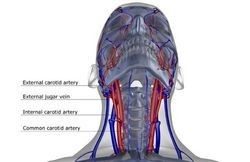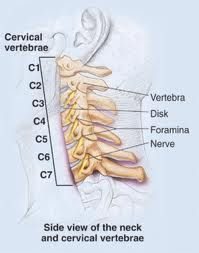Effects of Hanging and Strangulation: Bill Bailey Ain’t Coming Home
“Won’t you come home, Bill Bailey, won’t you come on home
I’ve moaned that whole day long
I’ll do all the cookin’ honey, I’ll even pay the rent
I know, that I have done you, oh so, wrong
You remember that rainy evenin’
I throwed you out, with nothin but a fine tooth comb
I know I’m to blame, now … ain’t it a shame
So baby, won’t you please come
I said now, won’t you please come.
Bill Bailey, won’t you please …. come on home.”
Bill Bailey, the last person executed by hanging in the United States
 On a bitterly cold January night in 1996, around midnight, the toes of 49-year-old convicted murderer Billy Bailey dangled ten feet above soggy, wet soil. His new white tennis shoes a sharp contrast to the black nighttime sky.
On a bitterly cold January night in 1996, around midnight, the toes of 49-year-old convicted murderer Billy Bailey dangled ten feet above soggy, wet soil. His new white tennis shoes a sharp contrast to the black nighttime sky.
The two guards who’d escorted Bailey to the platform, now stood one on Bailey’s left and the other to his right. Each wore black jumpsuits, and black hoods held in place by baseball caps.
The officer to Bailey’s right kept his back to witnesses and held the condemned prisoner’s shoulder. The other officer maintained a firm grasp on Bailey’s left arm.
Warden Robert Snyder stood farther to the right.
A noose hanging from the gallows pole gently swayed in the breeze.
No one knows what Bailey was thinking as he stood on the platform that night. Perhaps he’d been replaying “that night” in his mind. Maybe he thought of being the 19th of 23 children in an abusive and poverty stricken home. That when faced life in prison as a habitual offender in March of 1979, he’d decided to walk away from the work-release center to hold up a liquor store and then murder Gilbert Lambertson, 80, and his wife, Clara, 73, in their farmhouse. A property situated barely 10 miles from the very spot where the gallows stood.
It’s possible that Bailey remembered that he’d been crying when he committed the liquor store robbery.
It could be that he’d committed the murderers as a means to receive the death penalty. If so, he’d gotten his wish because he was convicted and sentenced to death for the shotgun murder of the innocent innocent and elderly farm couple.
Standing on the platform Bailey stood quite still, and when Warden Robert Snyder asked if he had any last words Bailey quietly replied, “No, sir.” But the warden couldn’t hear Bailey’s response to his question, so he asked again, “Do you have any last words?” Bailey again replied, “No, sir.”
The warden then motioned for the officers to lead Bailey onto the trapdoor where they placed a strap around his ankles and pulled a black hood over his head and chest. Then they placed the noose noose over the hood and securely tightened it beneath Bailey’s chin.
Warden Snyder checked and double-checked the hood to be certain that the hangman’s knot lay directly beneath Bailey’s left ear, an old Army regulation to assure the straightening rope would bring a quick death by severing the spinal cord.
When he was satisfied that everything was in order, the warden stepped back and used both hands to pull the gray wooden lever with both hands.
The murdered couple’s sons, Saxton and Delbert Lambertson, were among the witnesses to Bailey’s execution. They saw the trapdoor swung open in response to the pulling of the lever, and they heard dull thump of its mechanisms. They watched Bailey fall through the opening in the floor with five feet of manila rope rapidly snaking behind in his wake, snapping taut when it reached its end.
Eleven minutes of silence passed before Bailey was pronounced dead at 12:15 a.m.
There had been no complications.
Hangings
Hangings have been a staple in mysteries for as long as we can remember. The Wild West featured them at high noon. The government also used them as a  means of execution, with the last being that of Mr. Bill Bailey, the fellow from the state of Delaware mentioned above.
means of execution, with the last being that of Mr. Bill Bailey, the fellow from the state of Delaware mentioned above.
Now, knowing that Bailey’s life ended at the end of a rope in Delaware, well, we finally have the answer to the never-ending question. No, he’s not coming home, so feel free to stop singing about him.
Most writers who’ve penned death by rope or other “twisted” cord have never seen a victim of strangulation, or hanging (sometimes they’re the same). And that, of course, makes the task a bit more difficult, having to rely on books, TV, film, and the word of experts. So before we look at an actual photo straight from the morgue (I snapped the image), let’s take a moment to discuss why and how something as small as a shoelace has the ability to end a human life.
The neck, although looking sturdy perched on a set of nicely toned shoulders (above left), is actually quite vulnerable to life-threatening injury.
 After all, there’s a lot of important stuff packed into a fairly small space—spinal cord, airway, and major blood vessels—and there’s not a lot of protection surrounding those vital body parts. There’s no bony encasement, such as our ribs that protect internal organs (heart and lungs), that circle around the interior of the neck. Nope, it’s basically just muscle and skin that separate the spinal cord, airway, and major blood vessels from harm.
After all, there’s a lot of important stuff packed into a fairly small space—spinal cord, airway, and major blood vessels—and there’s not a lot of protection surrounding those vital body parts. There’s no bony encasement, such as our ribs that protect internal organs (heart and lungs), that circle around the interior of the neck. Nope, it’s basically just muscle and skin that separate the spinal cord, airway, and major blood vessels from harm.
Did you know that hanging is actually a form of strangulation? Well, sometimes hangings may include some spinal cord or bone injury, but basically the death is by strangulation.
 Hangings are either complete (the entire weight of the body is suspended by the neck), or incomplete, where a portion of the body is touching the ground/floor.
Hangings are either complete (the entire weight of the body is suspended by the neck), or incomplete, where a portion of the body is touching the ground/floor.
A judicial hanging (execution) is normally a death by internal decapitation, where the weight of the body combined with the fall causes the neck to break, disconnecting the head (internally) from the body.
A separation at C2 is the classic hangman fracture.
Rarely, as I’ve often read in novels, does a complete, external decapitation occur. However, it is possible to see an external decapitation (the head completely separates from the body—two individual pieces) in cases where the drop is much further than the length of the victim’s body. For example, the victim is 6-feet tall and is dropped from a height of 30 feet or more before the rope tightens.
 The muscles of the neck, such as the sternocleidomastoid muscle, remain intact during an incomplete decapitation.
The muscles of the neck, such as the sternocleidomastoid muscle, remain intact during an incomplete decapitation.
Strangulation by ligature, tool, or mechanism is a little different, however. Death is normally caused by obstruction of blood flow to the brain, which causes loss of consciousness followed by a loss of muscle tone and finally arterial and airway obstruction. Naturally, other things occur during the time of strangulation, but those listed are probably of the most concern for writers.
However, pressure applied to the neck for mere moments doesn’t always cause death. Martial arts strangle/choke holds often involve a compression of the major neck arteries, causing a temporary unconsciousness. The trachea (windpipe) is not compromised during the application of these techniques.
This post-autopsy photo (below right – note the stitching of the “Y” incision) shows a deep ligature mark on the neck (upper left of the image).
The murder weapon was an extension cord, the typical cord found in many homes.
T o help orient – the head is to the left, just outside the upper edge of the photo. The Y-stitching begins at the bottom left (upper right shoulder area) and continues to the mid chest area where it’s met by a like incision that began at the upper left shoulder area (upper area of the image) and continued to the chest center. The incision continued down to the area below the navel (bypassing the bellybutton).
o help orient – the head is to the left, just outside the upper edge of the photo. The Y-stitching begins at the bottom left (upper right shoulder area) and continues to the mid chest area where it’s met by a like incision that began at the upper left shoulder area (upper area of the image) and continued to the chest center. The incision continued down to the area below the navel (bypassing the bellybutton).
By the way, the “Y” incision image is not of the mysterious Bill Bailey. And no, he’s definitely not coming home.
*This particular autopsy was conducted in the state of Ohio, where procedure may vary from the area where your story is set.
“Hangman, hangman, hold it a little while,
I think I see my friends coming, Riding many a mile.
Friends, did you get some silver?
Did you get a little gold?
What did you bring me, my dear friends, To keep me from the Gallows Pole?
What did you bring me to keep me from the Gallows Pole?”
“Gallows Pole
~ Led Zeppelin
Bill Bailey, a classic Dixieland song has been covered by artists such as Louis Armstrong, Patsy Cline, Bobby Darin, Aretha Franklin, Brenda Lee, Ella Fitzgerald, Sarah Vaughan, Jimmy Durante, Harry Connick Jr., Michael Bublé, Sam Cooke, Al Hirt, and Bing Crosby.
By the way, I was once a member of a jazz band that used to perform the song from time to time. That was a long time ago, back in my trumpet-playing days.





Wonderful, interesting information thank you Lee